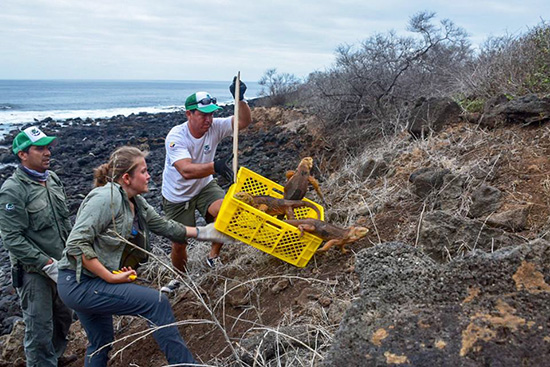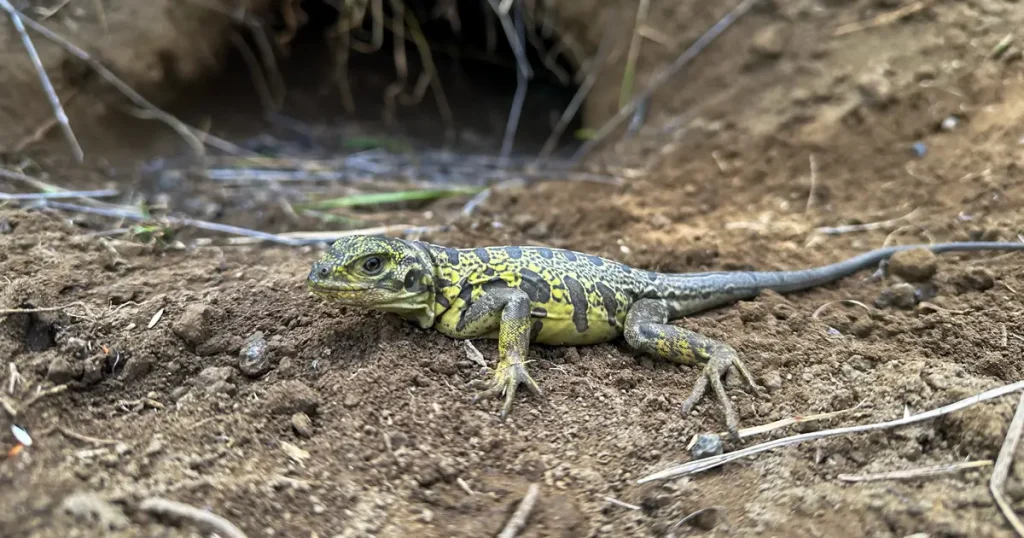More Than 1,400 Land Iguanas Reintroduced to Santiago Island

The Galápagos National Park Directorate (GNPD) recently transferred 1,436 land iguanas (Conolophus subcristatus) from North Seymour Island to Santiago, in part to facilitate ongoing ecological restoration of that island. The release marks the first time land iguanas roamed this island in nearly 200 years.
The last time living land iguanas were recorded on Santiago Island was during Charles Darwin’s visit in 1835. Over the years, the Santiago land iguana population was devastated by the presence of invasive species, such as feral pigs — which were eradicated in 2001 during Project Isabela.
A group of 25 park guards participated in this effort, which was developed in four phases. The first two phases began at the end of last year with the capture of individual land iguanas on North Seymour, followed by their subsequent transfer to captivity and quarantine on Santa Cruz Island.
The third phase took place on January 3 and 4 of this year and corresponded to the release of the iguanas in the coastal areas of Santiago: Puerto Nuevo and Bucanero, which have ecosystems similar to those of their natural habitat, and have abundant vegetation for their food.
The last stage of the project, which will begin in February, includes monitoring the establishment of iguanas on the island (adaptability), reproduction (identification of nests), and verification of biomass — which includes the identification of their favorite plants to eat, collection of survival data, and others.
Danny Rueda, Director of Ecosystems for the Park, explained that local naturalist guides initially informed this project by reporting an increasing loss of vegetation — particularly cactus — on North Seymour at the beginning of 2016. This management measure will protect the population of land iguanas on that island, estimated at 5,000 individuals, due to the limited availability of food there.
“The land iguana is an herbivore that helps ecosystems by dispersing seeds and maintaining open spaces without vegetation,” Rueda commented. As such, a small number will remain in North Seymour so as not to cause drastic changes in the vegetation coverage of the island.
The environmental authority in Galápagos will establish a permanent management program for introduced species, such as ants and rodents, to protect future nesting areas of land iguanas in Santiago.
Content based on a press release from the GNPD, translated with their permission



